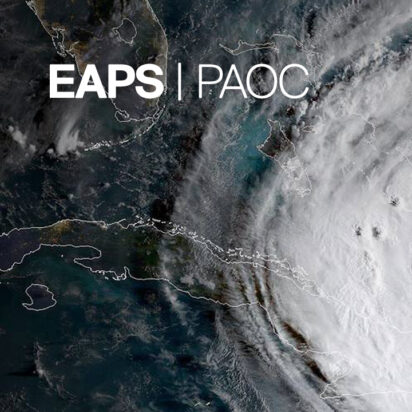
[PAOCQ] Sonia Seneviratne (ETH Zurich)
Date: Monday, February 10, 2025 Time: 12:00 - 1:00pm Location: 55-110 | MIT Campus, Cambridge, MA“Climate extremes in a warming climate: Outcomes and constraints of emission pathways”
In this presentation, I will provide an overview of recent developments on research on climate extremes, including the main conclusions of the 6th Assessment Report of the Intergovernmental Panel on Climate Change (IPCC AR6, Seneviratne et al. 2021) as well as more recent research (Batibeniz et al. 2023, Liu et al. 2023, Biess et al. 2024, Jaeger et al. 2024, Schumacher et al. 2024).
The newest evidence shows that changes in extremes are observed in all regions of the world, and that human influence strongly contributed to observed trends. With every increment of global warming, changes in extremes become larger, with important implications for changes in heatwaves, heavy precipitation, droughts, and tropical cyclones depending on the region. The evidence on observed and projected changes in droughts and heatwaves has particularly strengthened in recent years. All regions are projected to be affected by multiple changes in climate extremes and other climatic impact drivers with increasing global warming, in particular at 2°C of global warming and above. Limiting global warming to close to 1.5°C, as set as aim in the 2015 Paris Agreement, would be critical to avoid impactful increase in climate extremes, and would require immediate decreases in greenhouse gas emissions and fossil fuel burning.
Climate extremes are not only an outcome of emission pathways, but may constrain themselves future emissions, and society development. Integrated assessment models (IAMs) used to derive emission scenarios used in IPCC assessments include limited consideration of changes in climate, although these can affect decision making, for instance regarding risks for afforested areas and/or the overall land carbon sink to be affected by droughts, fire weather, or other climate extremes (Seneviratne et al. 2018a,b; Liu et al. 2023; Jaeger et al. 2024). Also economic impacts may be substantial (). Recently developed spatially-resolved Earth System Model emulators (e.g. Beusch et al. 2022; Quilcaille et al. 2022) can help provide fast feedback to newly derived emissions pathways and verify their physical realism.
PAOC Colloquium —
Interdisciplinary seminar series that brings together the whole PAOC (Program in Atmospheres, Oceans, and Climate) community. Seminar topics include all research concerning the physics, chemistry, and biology of the atmospheres, oceans and climate, as well as talks about societal impacts of climatic processes.
Contact: paoc-colloquium-comm@mit.edu
